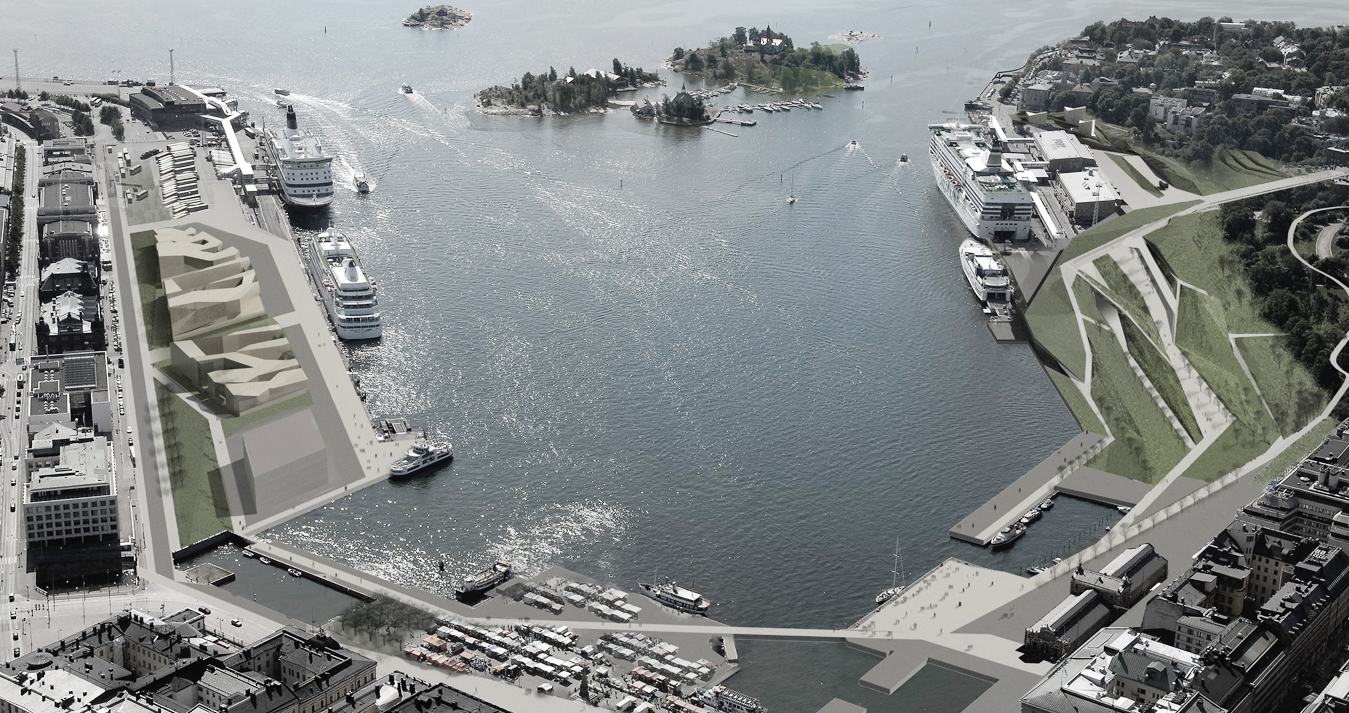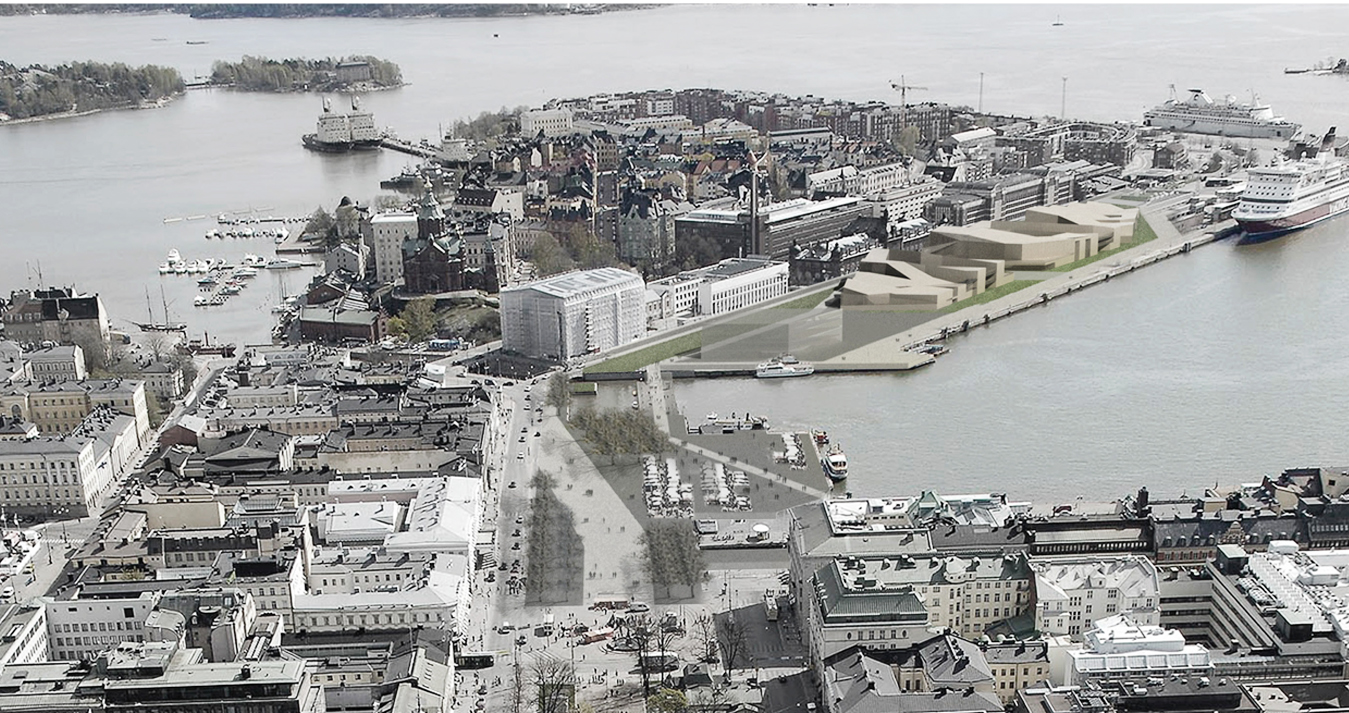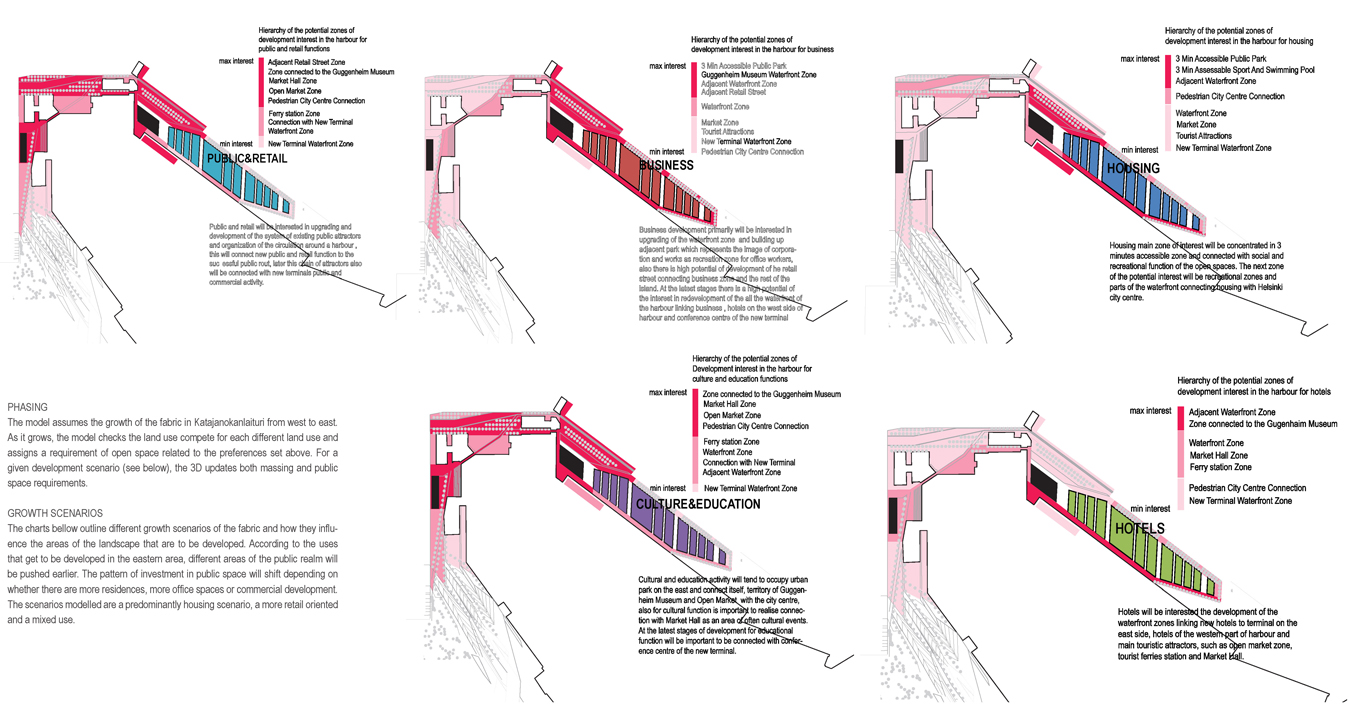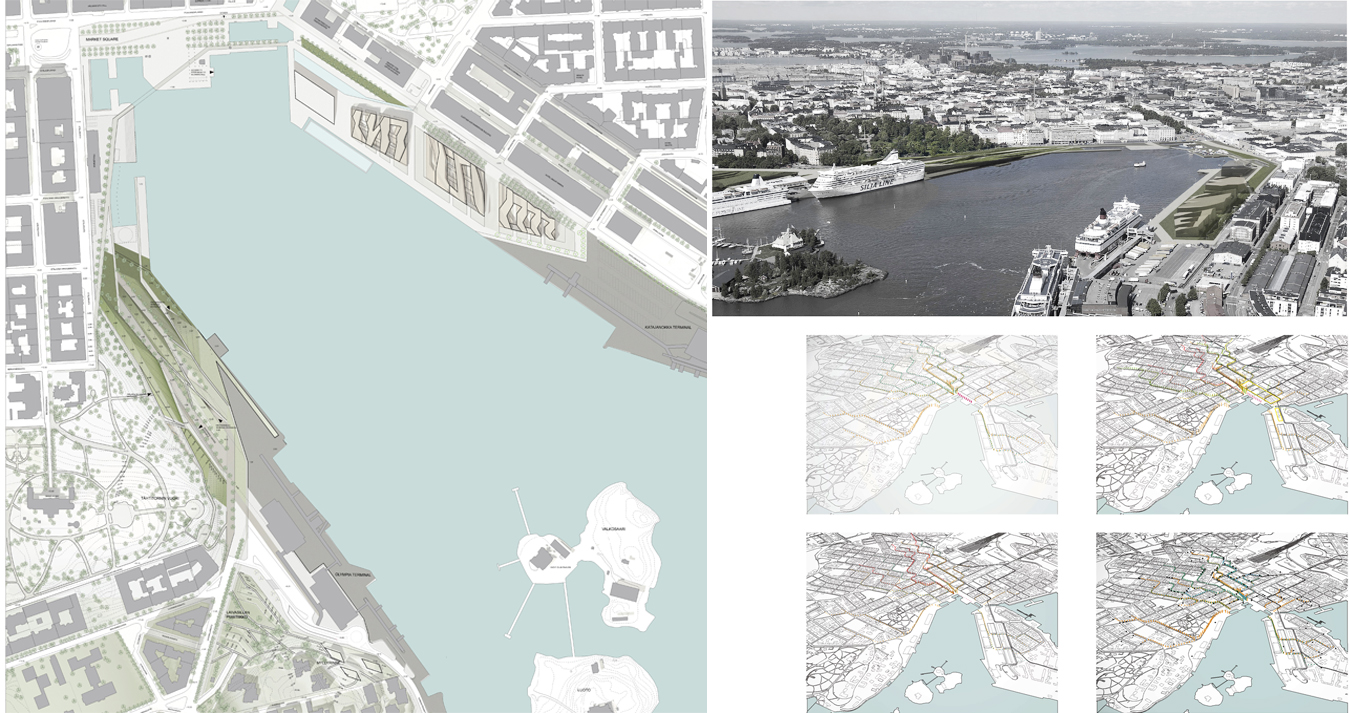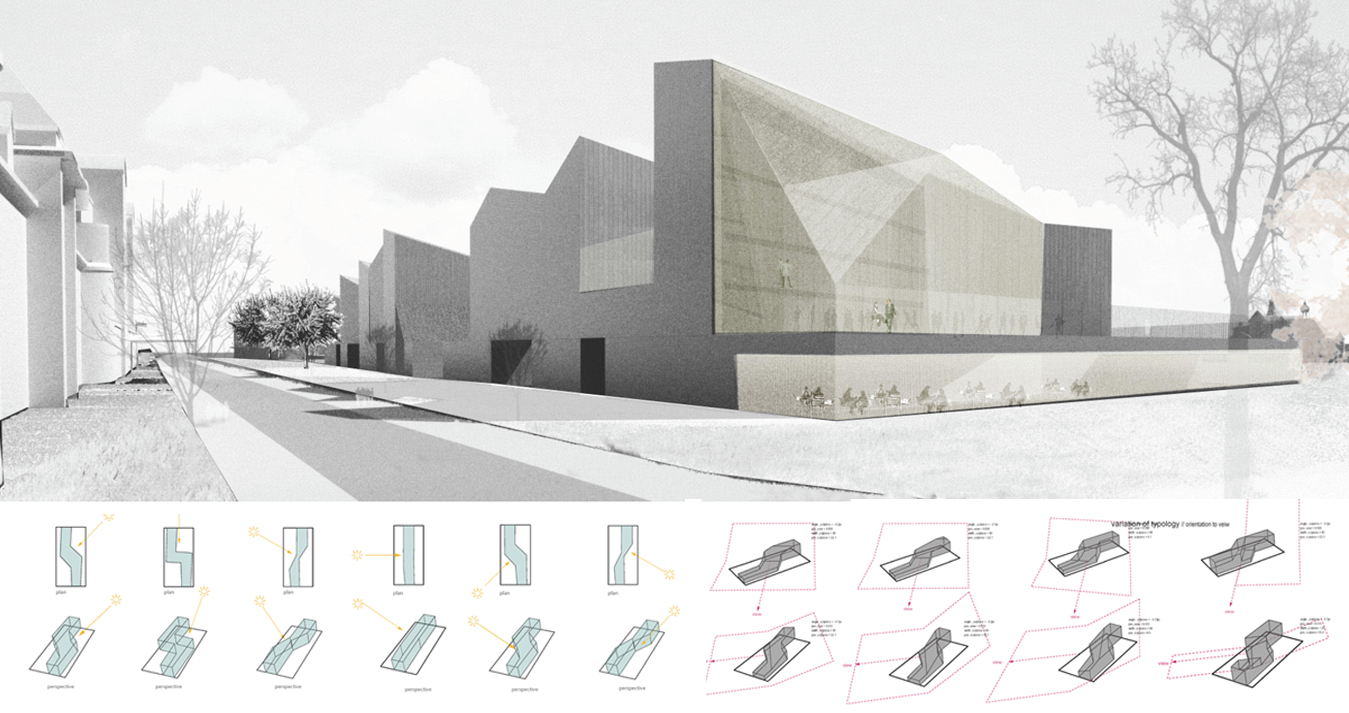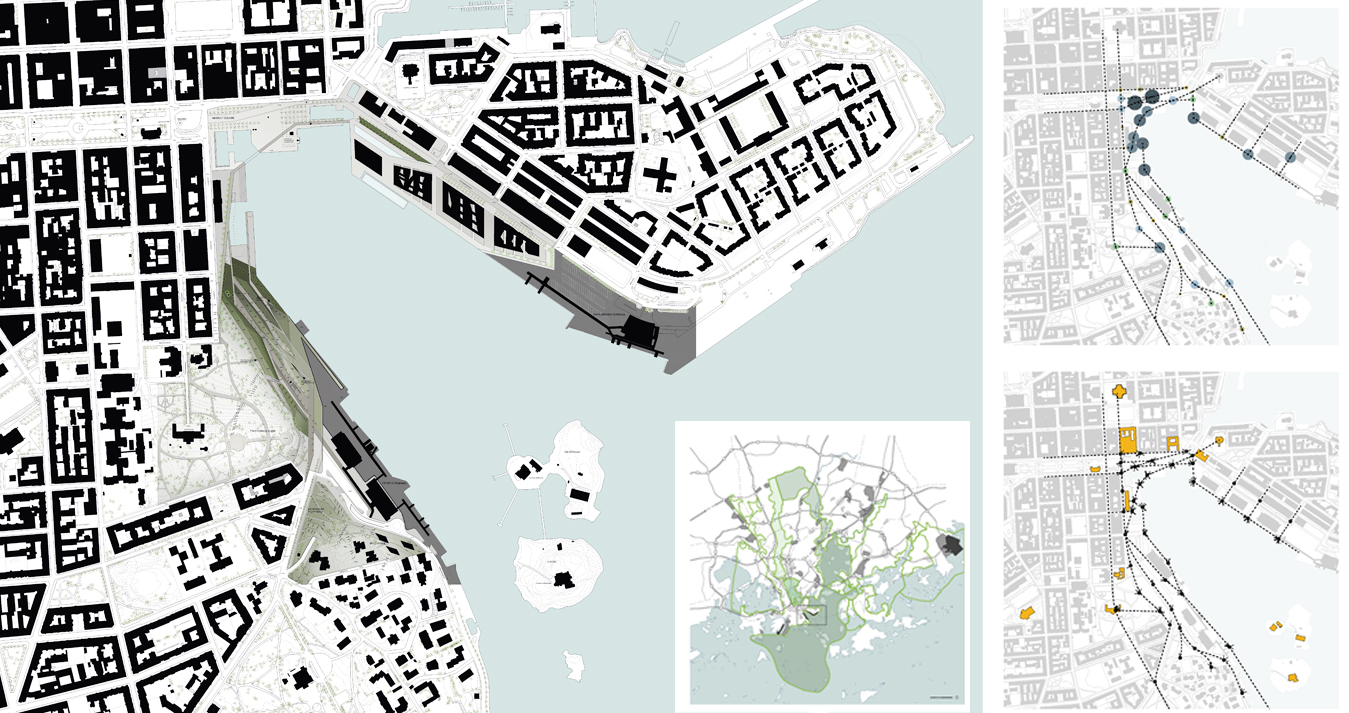Helsinki South Harbour Masterplan
The proposal considers the port of Helsinki as an interim landscape part of a large territorial framework that requires constant dialogue among different stakeholders. It offers a reference point from which to think about an urban space alternative to the generic urbanism or its self-evident counterpart of the icon. The project uses infrastructure as the c an interim landscape, setting the different modalities of urban movement as the basis of the spatial structure.
The project emphasizes the idea of process as a project on its own right, consisting on a series of intervention layers. These layers are both cumulative and emergent from the cultural Finish tradition, while hosting a clear aspiration of progress and innovation. These layers act as a mechanism of communication between the society and the agents which actively participate in shaping the port with the aim of fabricating a common vision.
Infrastructure Layer: Nowadays, the waterfront receives an excessive amount of traffic. In order to bring back the port into the city fabric, it is necessary to distribute this traffic through alternative routes. This redistribution of loads across the city would require a consensus-based approach
The concourse, the ground and the public space layer: The port of Helsinki is in an area of strategic importance of the city, the design of the public space integrates a wide diversity of spatial qualities.
The arquetype layer: The design of the housing development brings into port qualities which are brought further by sculping the volume to introduce sunlight into the building.
The relational Urban Model layer: The relational model is a digital tool which helps us conceptualise the process of change in the port. It enables, communication, participation and building up a common discourse regarding the phasing and massing of the masterplan.
- [COMPETITION]
- [status] ideas
- [location] Helsinki, Finland
- [program] Masterplan
- [date] 2012
- [area] 4000 m2
Helsinki South Harbour Masterplan
The proposal considers the port of Helsinki as an interim landscape part of a large territorial framework that requires constant dialogue among different stakeholders. It offers a reference point from which to think about an urban space alternative to the generic urbanism or its self-evident counterpart of the icon. The project uses infrastructure as the c an interim landscape, setting the different modalities of urban movement as the basis of the spatial structure.
The project emphasizes the idea of process as a project on its own right, consisting on a series of intervention layers. These layers are both cumulative and emergent from the cultural Finish tradition, while hosting a clear aspiration of progress and innovation. These layers act as a mechanism of communication between the society and the agents which actively participate in shaping the port with the aim of fabricating a common vision.
Infrastructure Layer: Nowadays, the waterfront receives an excessive amount of traffic. In order to bring back the port into the city fabric, it is necessary to distribute this traffic through alternative routes. This redistribution of loads across the city would require a consensus-based approach
The concourse, the ground and the public space layer: The port of Helsinki is in an area of strategic importance of the city, the design of the public space integrates a wide diversity of spatial qualities.
The arquetype layer: The design of the housing development brings into port qualities which are brought further by sculping the volume to introduce sunlight into the building.
The relational Urban Model layer: The relational model is a digital tool which helps us conceptualise the process of change in the port. It enables, communication, participation and building up a common discourse regarding the phasing and massing of the masterplan.


